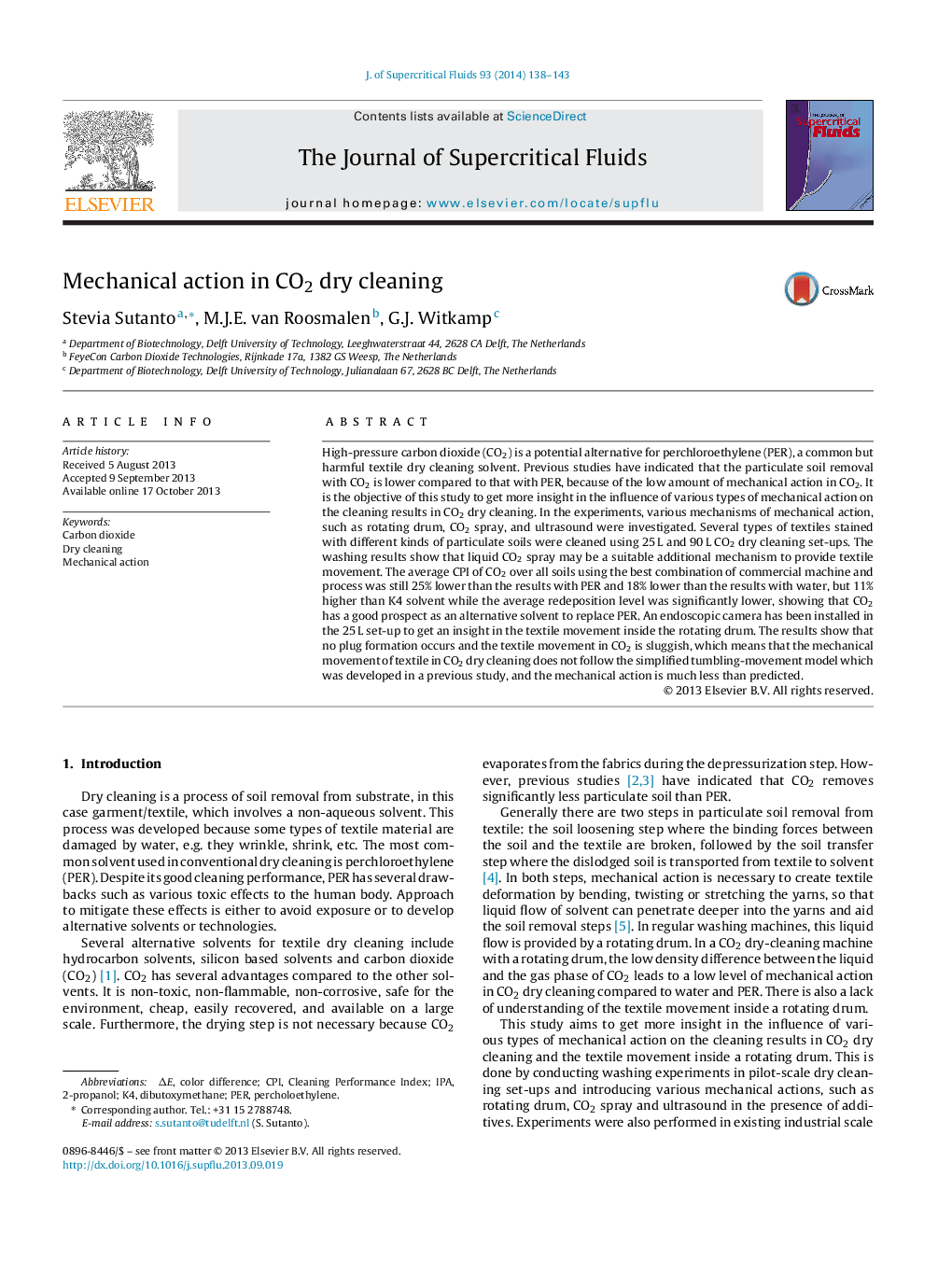| Article ID | Journal | Published Year | Pages | File Type |
|---|---|---|---|---|
| 230432 | The Journal of Supercritical Fluids | 2014 | 6 Pages |
•We performed washing experiments of stained textile in liquid CO2 medium.•Various mechanisms of mechanical action, such as rotating drum, CO2 spray, and ultrasound were investigated.•Liquid CO2 spray may be a suitable additional mechanism to provide textile movement.•CO2 has a good prospect as an alternative solvent to replace PER.
High-pressure carbon dioxide (CO2) is a potential alternative for perchloroethylene (PER), a common but harmful textile dry cleaning solvent. Previous studies have indicated that the particulate soil removal with CO2 is lower compared to that with PER, because of the low amount of mechanical action in CO2. It is the objective of this study to get more insight in the influence of various types of mechanical action on the cleaning results in CO2 dry cleaning. In the experiments, various mechanisms of mechanical action, such as rotating drum, CO2 spray, and ultrasound were investigated. Several types of textiles stained with different kinds of particulate soils were cleaned using 25 L and 90 L CO2 dry cleaning set-ups. The washing results show that liquid CO2 spray may be a suitable additional mechanism to provide textile movement. The average CPI of CO2 over all soils using the best combination of commercial machine and process was still 25% lower than the results with PER and 18% lower than the results with water, but 11% higher than K4 solvent while the average redeposition level was significantly lower, showing that CO2 has a good prospect as an alternative solvent to replace PER. An endoscopic camera has been installed in the 25 L set-up to get an insight in the textile movement inside the rotating drum. The results show that no plug formation occurs and the textile movement in CO2 is sluggish, which means that the mechanical movement of textile in CO2 dry cleaning does not follow the simplified tumbling-movement model which was developed in a previous study, and the mechanical action is much less than predicted.
Graphical abstractFigure optionsDownload full-size imageDownload as PowerPoint slide
